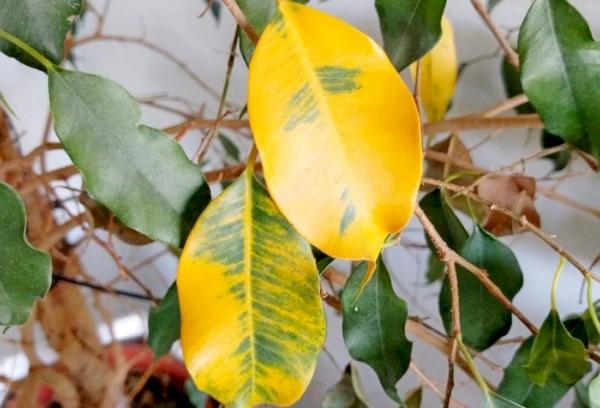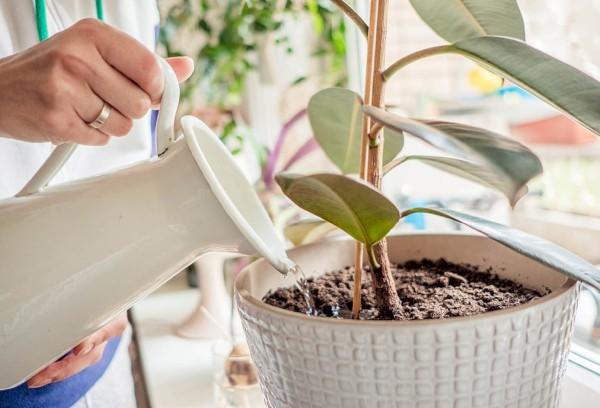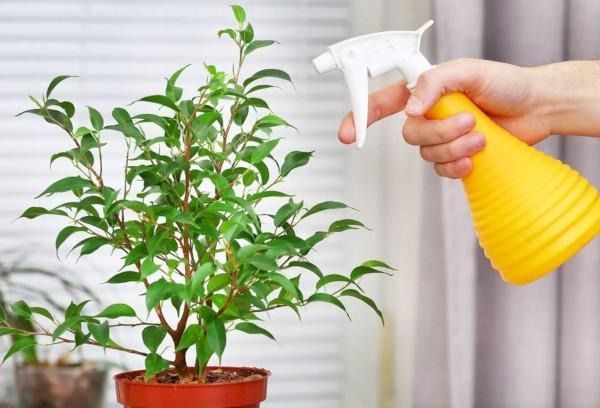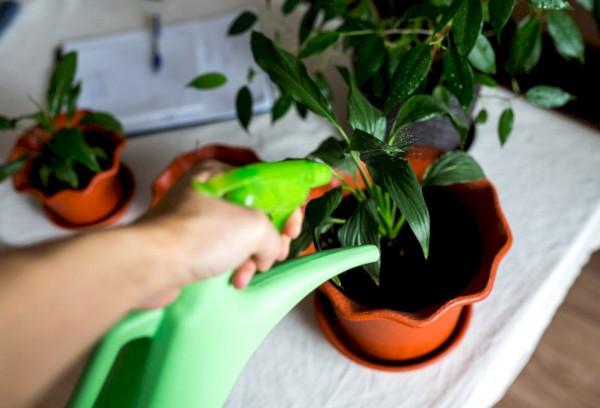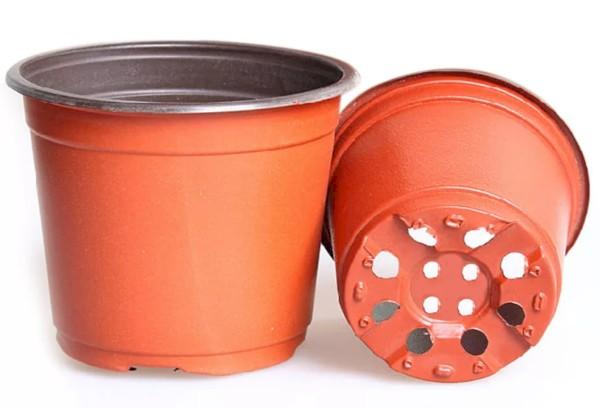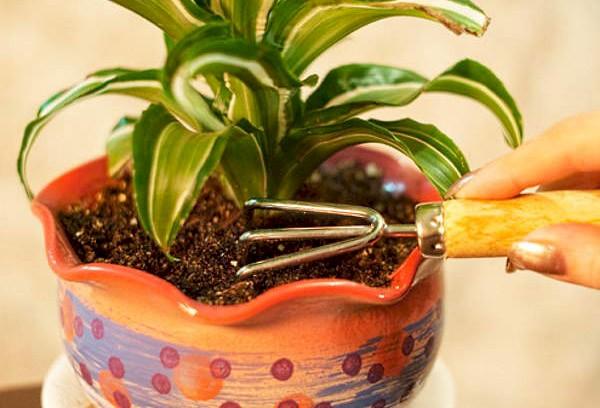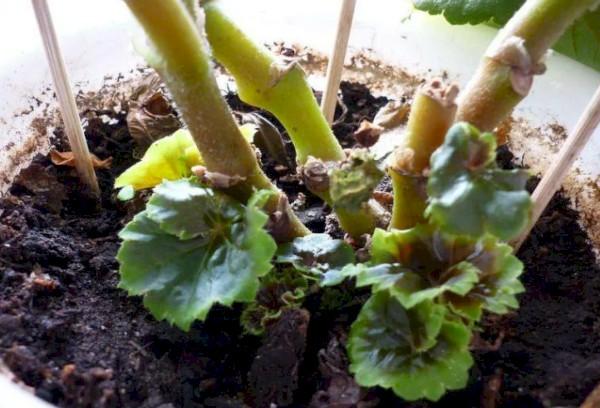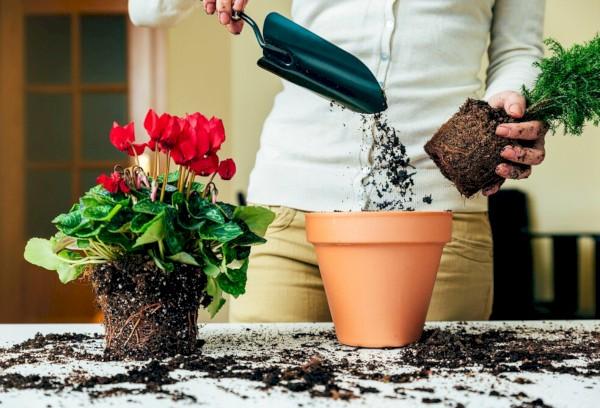How not to overwater your home flowers so they don’t die or get sick
A huge army of flower growers conditionally divides themselves into two groups - the first includes people who constantly forget to water their flowers, the second includes those who water their plants (of course, because of their great love for them).
My history
I also had problems with the bay in the past.
My lack of experience did not allow me to understand why suddenly the leaves of my begonia hung lifelessly and began to look limp.
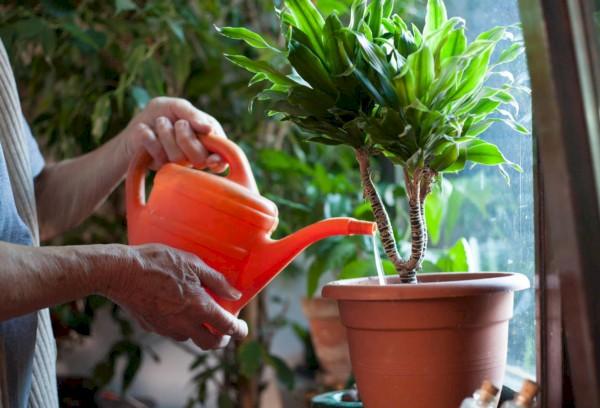
I thought that the plant did not have enough water, I watered it again and again. As a result, I confess, I hopelessly flooded the flower and it died. Only later did I find out that when there is excess moisture, leaf turgor is lost and I found information about what this is connected with.
With experience came the ability to recognize plant signals. I have sifted through a lot of literature and now I can share my experience on how not to overwater an indoor flower, but to give it exactly as much moisture as it needs.
Signs indicating a flooded plant
The first thing the leaves do is droop and the plant looks like it is starved of moisture. And he really misses her. With chronic overwatering, the soil in the pot becomes compacted, becomes swampy, and sour. In such soil, the roots cannot work normally, as they are deprived of oxygen.
As a result, moisture becomes inaccessible to the flower, although the substrate contains it in excess. This is such a paradox. Later other symptoms appear.The leaves first become faded, lose color, and later turn yellow and fall off. The stems soften and rot appears in the neck area. At this stage, the flower can no longer be saved. If you take it out of the ground, you can see that most of the roots have rotted.
To water or not to water – that is the question
For those who have little experience in floriculture, it is difficult to determine whether it is time to water their favorite flowers or should they wait. In such a situation, I recommend refraining from watering for another 2-3 days. It's always better to under-hydrate than over-hydrate.
A slight drying out is not a problem even for moisture-loving plants. But overfilling will have undesirable consequences. Especially if it happens regularly. Due to drought, small peripheral roots may die, which will quickly grow back. While roots that have rotted from excess water cannot be helped.
Differences in watering in winter and summer
In summer, plants actively vegetate - they grow shoots, leaves, and buds. Add to this the high air temperature. Of course, the earth will dry out faster, the flowers need more moisture. This means that watering should be more abundant than in the cold season, even for the same flower.
In winter, watering should be carried out 1.5-2 times less often and with less water, taking into account the characteristics of a particular plant. Some species need a rest period and are practically not watered, being kept at a low temperature (from +8 to +15 degrees).
This applies to:
- azalea;
- cyclamens;
- pelargonium;
- hydrangeas;
- cacti;
- myrtle;
- oleander.
The list includes many other plants. It is better to clarify the features of the life cycle of a flower when purchasing or later by looking at thematic sites on the Internet.
At low temperatures, flowers are watered occasionally (about once a month) and sparingly. If you continue to water them as usual, the roots will quickly rot in the cold soil.
The life processes of these plants are organized in such a way that they need winter rest. Many of them require drastic pruning in the fall. In spring, the plant will again grow new leaves, produce new shoots, and then the previous watering regime must be resumed.
Be careful - autumn
The transition period in autumn can be especially dangerous. From the second half of September, the conditions for keeping flowers worsen. The cold comes to the apartments, because of the rains the air is oversaturated with moisture, the level of lighting decreases sharply. This is the most dangerous time when the likelihood of flooding the plant increases sharply.
During this period, you need to water the flowers very carefully. It will be possible to increase the frequency of watering after the heating is turned on. It would also be useful to organize additional lighting - this will make life easier for the plants.
How to determine how much water a particular flower needs?
We replant indoor plants every year. It turns out that some flowers are still small and sit in small pots, while others are planted in huge bowls. When watering, it is not necessary to take into account the age and size of the plant.
The amount of moisture should be proportionate, but keep in mind that the flower will take as much of it as it needs. I am not guided by the volume of liquid for a particular pot, but simply pour water in small portions, waiting for it to be absorbed, until it begins to flow into the pan from the drainage holes.
By the way, the plant will absorb moisture back in the first 10-15 minutes, so do not rush to pour it out.If after this period of time there is still water in the pan, drain it. By doing this, you will never overwater your flower. Do not forget that the water must first be settled for at least a day.
To avoid flooding the plant, choose the right pot
Beginning flower growers do not always choose the right pot for the purchased plant. According to the rules, the new container should be 2-3 cm larger in diameter than the previous one. Sometimes we sin by choosing a pot not to match the flower, but to match the interior, without taking into account the size.
In a container that is too large, the likelihood of flooding increases. The small root system cannot completely absorb the entire volume of soil, so the soil does not have time to dry out between waterings. As a result, problems begin with the roots.
Watering a flower in a pot without drainage holes
For beginners, I recommend planting flowers only in pots with drainage holes. In this case, excess water will pour into the pan and will not harm the roots of the plants. Later you will learn how to grow flowers in beautiful pots without using a pot. As you know, a flower pot is a sealed container.
What is the secret of the grower’s well-being in this case? How not to flood such a flower? After all, there are no holes in the bottom of the container. I became so bold after I became familiar with the method of growing some flowers in a closed system.
This landing has its own characteristics:
- At the bottom you need to lay a high layer of expanded clay drainage; I put pebbles 5 cm high. In this case, even if more water is added than required, the roots of the flower will not reach it.
- It is better to take loose soil, with the obligatory component in the form of peat.
- Additionally, fragments of sphagnum moss added to the soil mixture will help loosen the substrate.
- You can also add pieces of charcoal; it will help prevent putrefactive processes inside the pots with constant accumulation of moisture near the bottom.
This is how I planted my anthurium and a small dracaena from cuttings. Both flowers are alive and well. I water them somewhat less frequently than other plants. I determine the need for watering by sticking my finger into the soil to a depth of 2-3 cm. If it is dry there, I add a fairly large volume of water. By the way, drainage wouldn’t hurt in a regular pot with holes. Even if the ground is too wet, water will seep into the drainage layer and the roots will not be in danger.
Loosening after watering is a necessity
You've probably seen a set of tools for indoor plants on sale. Did you buy it? Or are you just getting ready? There is one incredibly useful item there - small rakes. However, they can easily be replaced by an ordinary kitchen fork; that’s what I use.
After watering, the soil must be loosened. What do we achieve in this case:
- Destroy the dense top crust.
- As a result, the roots are provided with the oxygen flow necessary for their normal functioning.
- Moisture evaporates freely from the earthen clod without accumulating in the root zone.
- Even an overwatered flower dries out faster in this case.
I carry out loosening 3-4 hours after watering, when the soil no longer sticks together into lumps and easily gives in to a fork or rake. This procedure takes a little time, but its importance cannot be overestimated.
Determining whether the soil is dry or not
It is not only the amount of water added that is important. It is also necessary to correctly determine the interval between waterings. The duration of the interval depends on several factors:
- time of year;
- soil density;
- pot volume;
- plant size;
- temperature in the room.
Even taking all this into account, it is impossible to determine how long it will take for the soil to dry out to the nearest day. However, there are tips that help me. First of all, I look at the color of the soil. Dry soil always looks light, grayish.
The weight of the pot will also indicate the need for watering. If the bowl has become light, then it’s time to take up the watering can. Surely you yourself have noticed that a pot with a plant becomes heavier after watering. As I said above, you can check the dryness of the soil by simply plunging your finger into it a couple of centimeters.
Again, the requirements of a particular plant are taken into account. Moisture-loving crops are watered as soon as the top layer of soil dries out. For cacti and other succulents, it is important that the soil becomes almost half dry.
How to save a flooded flower?
You need to save the plant at the first sign of overwatering; if the roots are completely rotten, it is useless. Don't forget, a flooded plant looks just like it's lacking moisture. Try to remember how long ago you watered the flower, examine the soil in the pot. This will help pinpoint the cause.
How to proceed:
- If the soil is damp, the flower needs to be removed from the pot and the roots examined. The roots are still fine - you just need to dry the earthen ball. This can be done conveniently by wrapping it in a paper towel. Change the paper whenever it gets wet. The procedure must be repeated several times. However, you should not let it become completely dry; the soil should remain slightly moist. Then return the plant back to the pot.
- Alas, the roots darkened and became slippery. This means root rot has begun. Such areas need to be cut back to healthy tissue, and the sections should be sprinkled with crushed coal.
- The treated flower cannot be planted in the same soil. For it, a fresh substrate is used, pre-calcined in the oven. Plant the plant according to all the rules, laying a drainage layer.
- If the roots are severely damaged and a significant part of them has been cut off, you need to select a smaller planting container.
Pay attention and time to your plants, monitor their condition. It is easier to deal with any problem at the very beginning and flooding a flower is no exception. If there are a lot of plants, I recommend keeping a watering calendar, where you will mark the date of “water procedures”. It will make life much easier to select crops with the same soil moisture requirements. Did you overwater the flower? Immediately begin resuscitation measures before the roots rot.
